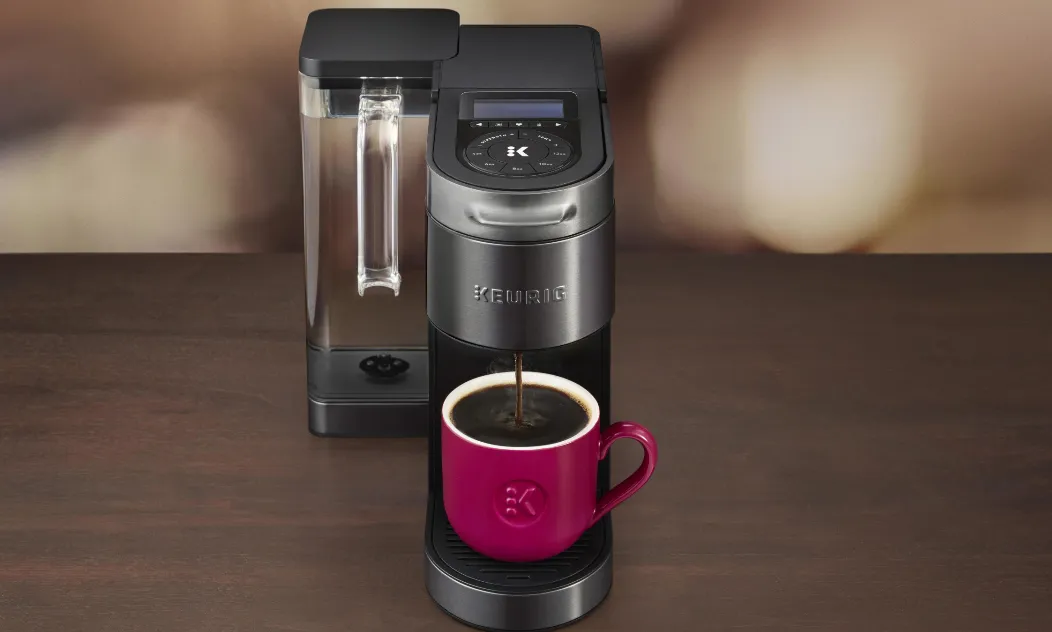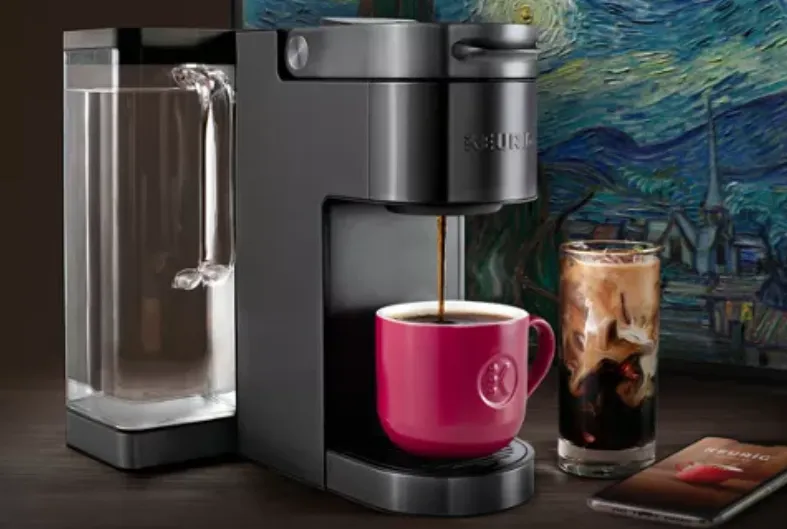Have you ever woken up in the morning, eagerly anticipating a fresh cup of coffee from your Keurig machine, only to be greeted by a disappointing sight – why is my Keurig leaking? In this piece, we will delve into the common reasons behind why your Keurig may be leaking and provide you with practical solutions to put an end to this bothersome problem.
Why is My Keurig Leaking Water From the Top?

If you notice that your Keurig is leaking water from the top, there are several possible reasons for this issue. Let’s take a closer look at each potential cause:
Clogged Keurig
Over time, mineral deposits and other debris can accumulate in the water lines and internal components of your Keurig, leading to clogs. When this happens, water may find alternative pathways, including leaking from the top. To address this, you can try descaling your Keurig by running a solution of water and descaling the solution through the machine. This should help to dissolve any built-up deposits and restore proper water flow.
Overfilled Water Tank
It’s important not to exceed the maximum fill line marked on the water tank of your Keurig. Overfilling can cause water to leak from the top. Ensure that you only fill the tank up to the designated line to prevent any overflow.
Faulty Capsules
If you are using reusable or third-party capsules, they may not be properly sealed, causing water to leak during the brewing process. Try using official Keurig K-Cups or ensure that the reusable capsules are tightly sealed to prevent any leakage.
Dirty Entrance Needle
The entrance needle, located at the top of the brewer, punctures the K-Cup or capsule during brewing. If it becomes clogged or covered in residue, it can disrupt the brewing process and result in water leakage. To clean the entrance needle, you can use a paper clip or a specialized cleaning tool provided by Keurig. Gently insert the tool into the needle to remove any debris or buildup.
Loose or Broken Upper Gasket
The upper gasket, also known as the upper puncture needle gasket, is responsible for creating a seal around the K-Cup or capsule. If it becomes loose or damaged, water can leak from the top of the brewer. Inspect the upper gasket and make sure it is securely in place. If it appears damaged or worn out, you may need to replace it.
Why is My Keurig Leaking Water From the Bottom?

There are a few potential reasons why your Keurig might be leaking water from the bottom.
Cracked reservoir
The first possibility is that the reservoir has a crack or damage, which is allowing water to escape. To check for this, remove the reservoir and inspect it carefully for any visible cracks or leaks. If you find any damage, you may need to replace the reservoir.
Bad O-ring
The O-ring is a rubber seal located at the bottom of the reservoir, which helps to prevent water from leaking out. Over time, this O-ring can become worn or damaged, leading to leaks. To inspect the O-ring, remove the reservoir and check the seal thoroughly. If you notice any signs of wear or damage, it’s a good idea to replace the O-ring to fix the leakage issue.
Worn-out seal
Lastly, a worn-out seal could also be the culprit behind the water leakage. The seal is responsible for creating a watertight connection between the water reservoir and the machine. If the seal is worn out or damaged, it may not be able to effectively prevent water from leaking. To check the seal, open up the Keurig and inspect the area where the reservoir connects to the machine. Look for any signs of wear or damage on the seal.
How to fix Keurig Leaking from the top and bottom?
Here are some tips you can fix:
- Make sure to avoid overfilling the water reservoir.
- Replace any cracked water reservoir to prevent leaks.
- Check and replace or tighten the faulty water hose if necessary.
- Descale and unclog your Keurig coffee maker regularly to maintain optimal performance.
- Clear any blockage in the valve pump to prevent leakage.
- Replace any damaged or misplaced O-ring to ensure a proper seal.
Models Commonly Affected
The models commonly affected by leaking issues include the Keurig Mini, Keurig K40, and Keurig 2.0.
Keurig Mini
The Keurig Mini, also known as the Keurig K-Mini or Keurig K15, is a compact and portable single-serve coffee maker. It is designed for convenience and simplicity. However, some users have reported water leaking from the top or bottom of this model. The common causes of leakage in the Keurig Mini may include clogged needles, overfilling the water reservoir, or faulty seals.
Keurig K40
The Keurig K40, also known as the Keurig Elite, is a popular model that offers a variety of brew sizes and features. Similar to other Keurig models, it can experience leaking issues. Some common reasons for leakage in the Keurig K40 include clogs in the needles, improper seating of the K-Cup or coffee pod, or damaged internal components.
Keurig 2.0
The Keurig 2.0 series, which includes models like K200, K250, K300, K350, K400, and K450, introduced several new features compared to earlier models. However, it is not immune to occasional leakage problems. Possible causes of leakage in the Keurig 2.0 series may include clogged needles, damaged or misplaced O-rings, or faulty water reservoirs.
FAQs
Why is my Keurig leaking from the bottom?
Keurig may be leaking from the bottom due to a cracked water reservoir, a loose or faulty water hose, or a damaged or misplaced O-ring.
How do you unclog a Keurig?
To unclog a Keurig, you can descale it by running a mixture of water and vinegar through the machine, cleaning the needle using a paperclip, and ensuring the water lines are clear and free of debris.
Conclusion
In the quest for a perfect cup of coffee, dealing with a leaking Keurig can be exasperating. However, armed with the knowledge we’ve shared, you now have the tools to overcome this issue. By identifying and addressing the underlying causes such as clogs, faulty seals, or excessive pressure, you can enjoy a leak-free Keurig experience once again.
